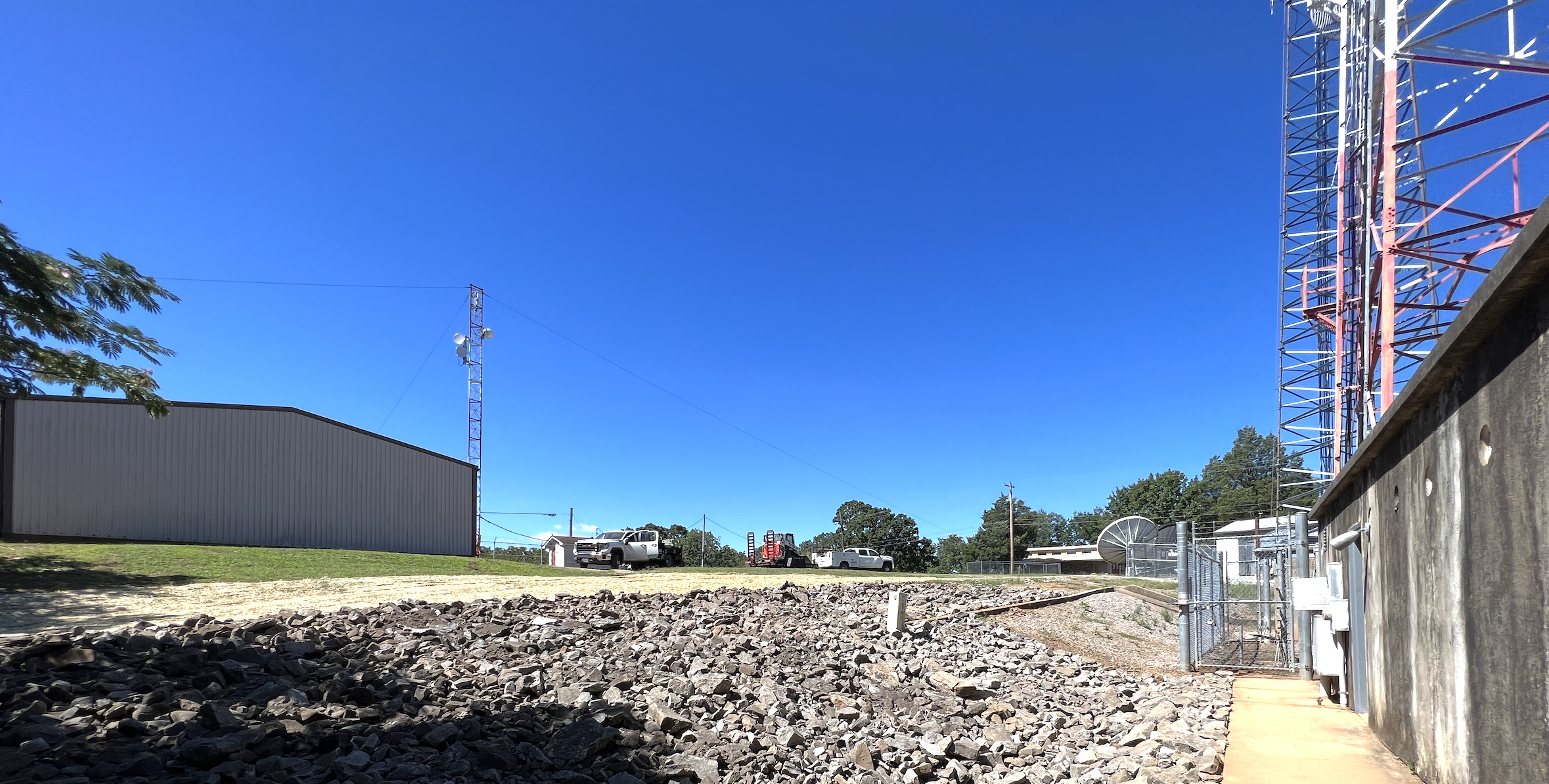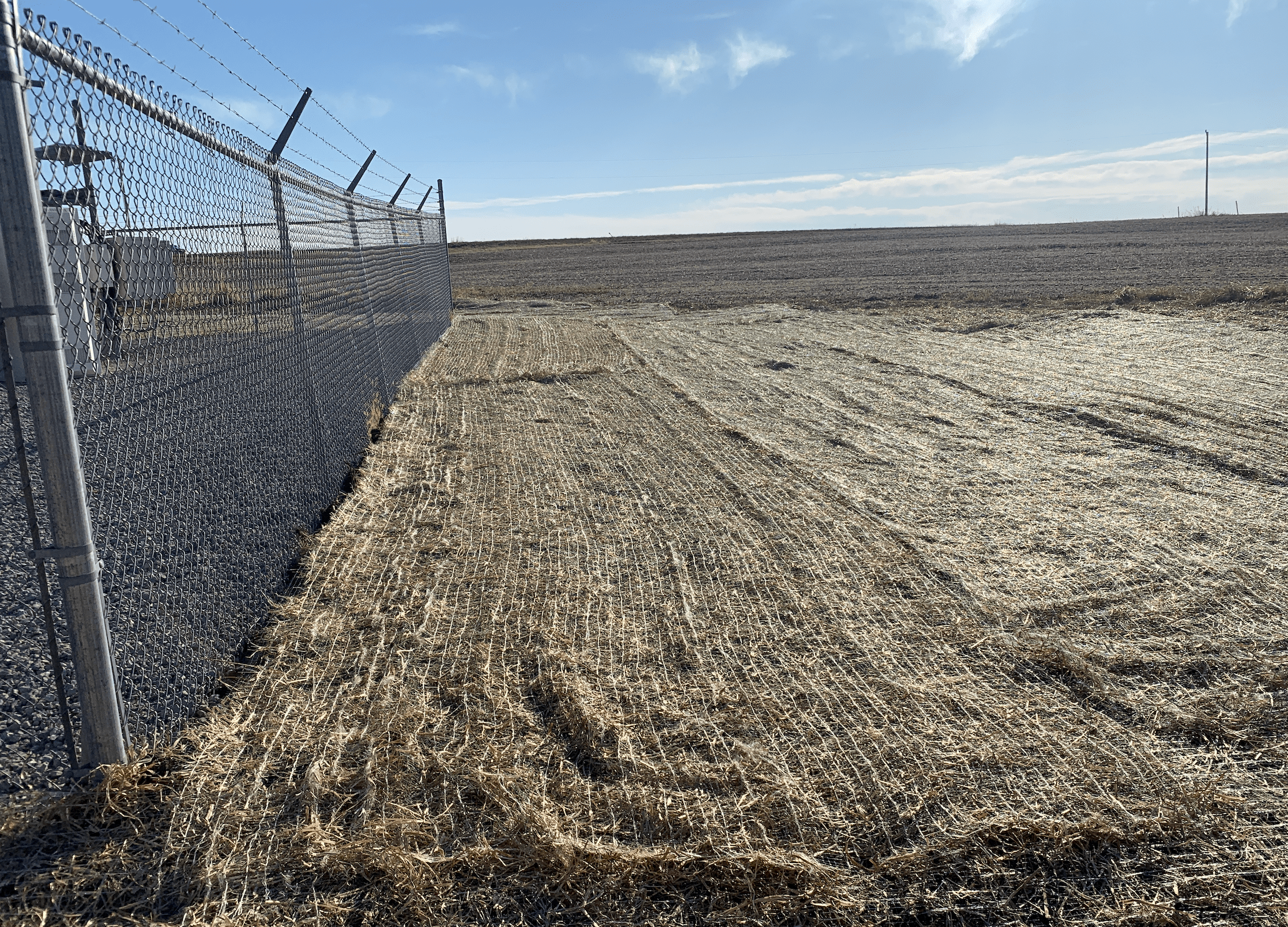
Repairing and preventing erosion is a case-by-case and unique situation. The following terms encompass a comprehensive set of strategies and techniques employed in erosion and drainage solutions, emphasizing the importance of proactive measures, environmental considerations, and sustainable practices.
Revegetation
Revegetation is the process of reintroducing plant life, especially native vegetation, to an area that has experienced soil disturbance or erosion. This technique involves planting vegetation, such as grasses, shrubs, or trees, to stabilize the soil, promote infiltration, and provide a habitat for wildlife. With erosion control, revegetation is a key method to restore and enhance the natural environment.
Hydroseeding
Hydroseeding is a method of applying a slurry mixture composed of seeds, mulch, and other materials to the soil surface. This slurry helps stabilize the soil, promote vegetation growth, and reduce erosion and runoff. Hydroseeding is an effective technique for establishing vegetation quickly and efficiently, making it a valuable tool in erosion control and land restoration projects.
Broadcast Seeding
Broadcast seeding involves spreading seeds uniformly across a designated area. This method is commonly used in erosion control and land reclamation projects to establish vegetation. Seed is broadcasted to stabilize soil, prevent sediment runoff, and enhance the overall ecological balance.
Grading
Grading is the process of adjusting the slope and contour of the land to achieve a desired shape or surface. In erosion and drainage solutions, grading is often used to redirect water flow, create effective drainage systems and prevent soil erosion. Proper grading can contribute to the overall stability and functionality of a site.
Recrowning Roads
Recrowning roads involves reshaping the road surface to ensure proper drainage. This technique is essential for preventing water accumulation and promoting efficient water runoff. By maintaining a crown shape, roads can effectively shed water, minimizing the risk of erosion and structural damage.
Drainage Systems
Drainage systems are infrastructure designed to manage the flow of water and prevent issues such as standing water or erosion. These systems can include pipes, culverts, water bars, ditches, and swales. Implementing effective drainage systems is crucial for maintaining the integrity of utility sites and access roads.
Culvert Installation
Culvert installation involves placing long pipes made of rigid materials beneath roadways to provide a designated route for water. Culverts play a vital role in directing water away from critical areas, preventing soil erosion, and ensuring safe access to utility sites. Properly installed culverts contribute to effective water management.
Water Bars
Water bars are structures, often strips of material, strategically placed along pathways to divert water, and prevent erosion. These bars help control the flow of water, guiding it away from vulnerable areas. Water bars are a proactive measure in erosion control, particularly on access roads and utility sites.
Berms
Berms are raised mounds or embankments of soil, often constructed along contours, to control water flow. In erosion and drainage solutions, berms can be strategically placed to redirect water away from sensitive areas, preventing soil erosion and promoting effective water management.
Swales
Swales are shallow, wide channels or depressions created in the landscape to collect and redirect water. These features help manage water runoff, preventing erosion and facilitating proper drainage. Swales are a natural and effective solution in erosion control and water stewardship.
Riprap Lined or Vegetated Ditches
Riprap-lined or vegetated ditches involve reinforcing drainage ditches with materials like rocks (riprap) or vegetation. This method enhances the stability of ditches, preventing erosion and promoting sustainable water management. The choice between riprap lining and vegetation depends on specific site requirements.
Riprap Installation
Riprap installation involves placing a layer of durable rocks or stones along vulnerable areas to prevent soil erosion. This technique is commonly used in water management and erosion control, providing structural support, and protecting against the impact of water flow.
Check Dams
Check dams are structures built across drainage channels to slow down water flow and reduce erosion. These dams consist of rocks or other materials arranged in a way that creates natural barriers. Check dams are effective in preventing soil loss and sedimentation.
Silt Fencing
Silt fencing is a temporary barrier made of filter fabric placed around construction sites to control sediment runoff. This erosion control measure is designed to filter out sediment from runoff water, preventing it from flowing into nearby waterways. Silt fencing is crucial for maintaining water quality and preventing soil erosion.
Erosion Control Blankets
Erosion control blankets are made of natural or synthetic materials and are applied directly to the soil surface. These blankets provide a protective barrier, stabilizing the soil and reducing erosion. Erosion control blankets are especially useful in areas with high vulnerability to soil disturbance.
Construction Entrances
Construction entrances are designed to prevent mud and sediment from being tracked off construction sites onto public roads. These entrances are typically constructed with materials like gravel to allow water infiltration, reducing runoff and erosion. Construction entrances contribute to maintaining clean and safe roadways.
Native Plants
Native plants refer to species that naturally occur and have adapted to the local ecosystem. In erosion control and revegetation efforts, planting native plants is essential for stabilizing soil, promoting biodiversity and restoring natural habitats. Native plants are well-suited to local climate and soil conditions.
Stabilize Soil
Stabilizing soil involves implementing measures to prevent soil erosion and maintain its structure. Techniques such as revegetation, grading, and erosion control measures contribute to stabilizing soil. This is crucial for preserving the integrity of landscapes, preventing sediment runoff, and protecting the environment.
Bank Stabilization
Bank stabilization focuses on reinforcing and protecting the banks of water bodies, such as rivers or streams, to prevent erosion. Methods may include using riprap, vegetation, or other structural measures to stabilize the soil along the bank. Bank stabilization is essential for maintaining watercourse integrity.
Grass Seed
Grass seed refers to seeds of grass species used in revegetation and erosion control projects. Proper grass seed selection and planting contribute to stabilizing soil, preventing erosion, and promoting green cover. Grasses with deep root systems are often chosen for their effectiveness in soil stability.
Vegetated Roadside Ditch
A vegetated roadside ditch is a drainage channel along roadsides that is planted with vegetation, such as grasses and shrubs. This approach enhances the stability of ditches, reduces erosion, and promotes a natural and visually appealing solution to water management along roads.
It’s important to note that specific steps and material choices can vary based on factors such as climate, soil conditions, construction modalities, and intended use. Consulting with professional services such as civil or geotechnical engineering, or hydrologists is always a good idea to tailor the installation process to the unique circumstances of your project.





















